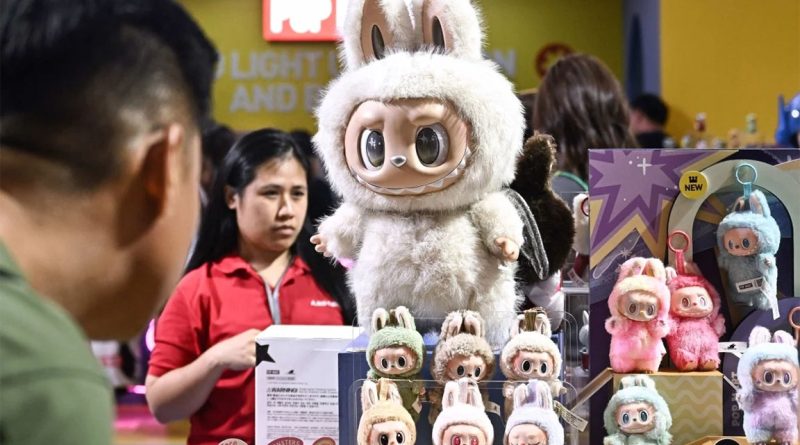Meet the Toy That’s Reshaping Global Pop Culture
Subscribe to our free newsletter today to keep up to date with the latest retail news.
Labubu, the goblin-like creature created by Belgian-born Hong Kong artist Kasing Lung, has become an unexpected breakout character in China’s lucrative blind box collectible market. Known for its large eyes and quirky expressions, Labubu rose to prominence through a strategic collaboration with toy giant Pop Mart, transforming from niche art figure to pop culture symbol across Asia and beyond.
Pop Mart introduced Labubu in 2018 as part of its ever-expanding artist-led character lineup. What started as a limited edition collectible has now evolved into a full-fledged merchandise empire. Labubu has become one of Pop Mart’s bestsellers, with the recent Labubu 3.0 series triggering long queues at store launches and a surge in online resale value.
Blind box toys thrive on surprise and scarcity, and Pop Mart uses that to its advantage
Pop Mart’s model relies heavily on blind box mechanics, where consumers purchase sealed packages without knowing which version of the toy they will receive. This method has proven wildly effective in Asia, tapping into both the thrill of surprise and the appeal of limited edition collecting.
The success of Labubu highlights how this strategy resonates with a generation of consumers drawn to the dopamine hit of “unboxing.” Pop Mart enhances this model by using scarcity as a feature, releasing rare editions that boost aftermarket demand. These tactics have helped solidify Labubu’s place as a premium collectible, attracting both hobbyists and speculative resellers.
Celebrity attention and digital virality have driven Labubu’s popularity worldwide
Labubu’s popularity received a major boost when celebrities began featuring the character in public. Notably, Lisa from Blackpink, a K-pop star with global reach, was spotted with Labubu merchandise, sparking renewed interest among her fans. These celebrity moments, combined with the viral nature of unboxing videos and toy hauls, helped Labubu transcend regional boundaries.
Social media platforms like Xiaohongshu and TikTok further amplified the craze. Influencers showcased their collections and rare finds, fostering a sense of community among collectors. This organic engagement, rather than traditional advertising, has proven more potent in creating a loyal fan base.
Strong revenue growth shows Pop Mart’s strategy is paying off
Labubu’s commercial success has translated into strong financial performance for Pop Mart. In early 2024, the company reported a year-on-year revenue growth of nearly 40 percent, with a significant portion attributed to Labubu product lines. Sales of the Labubu 3.0 series alone generated millions in revenue, and Pop Mart’s stock has seen renewed investor interest.
Pop Mart’s total market capitalization recently hit nearly $6 billion, underscoring investor confidence in its business model. Comparisons to other iconic brands like Hello Kitty or Be@rbrick are increasingly common, particularly as Pop Mart continues to expand beyond its home market.
Labubu marks a milestone in China’s efforts to export culture through consumer brands
China has long exported electronics, clothing and household goods, but cultural exports have remained elusive. Labubu’s rise challenges this narrative by positioning a locally managed, artist-designed toy as a global icon. Through partnerships with overseas retailers and pop-ups in cities like Tokyo and London, Pop Mart is testing Labubu’s resonance with international audiences.
The character’s aesthetic, a mix of cute and grotesque, appeals to Gen Z’s taste for irony and individuality. This blend allows Labubu to stand apart from Western counterparts and taps into a growing appetite for diverse cultural touchpoints in global youth culture.
Sources:
